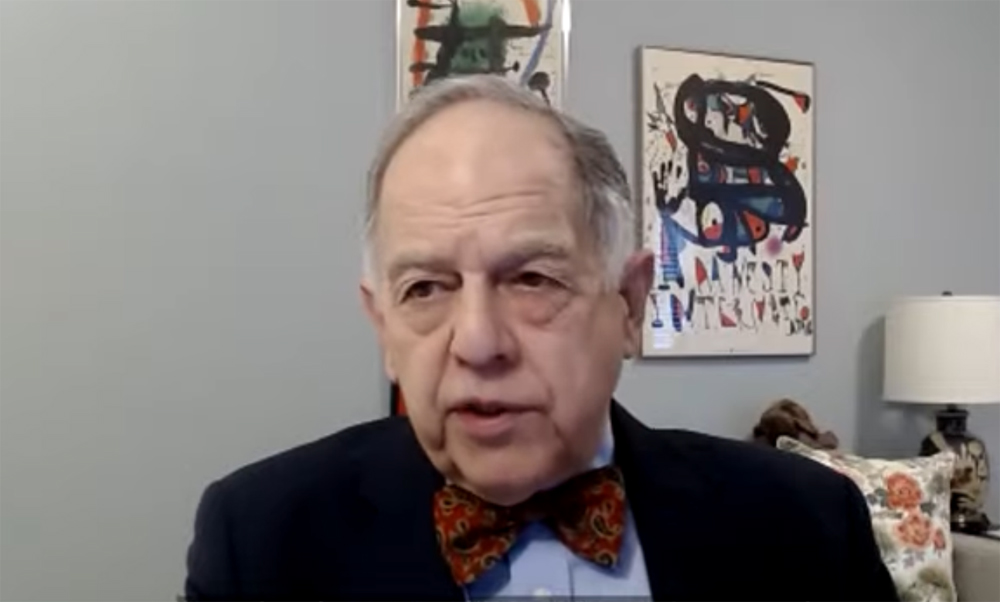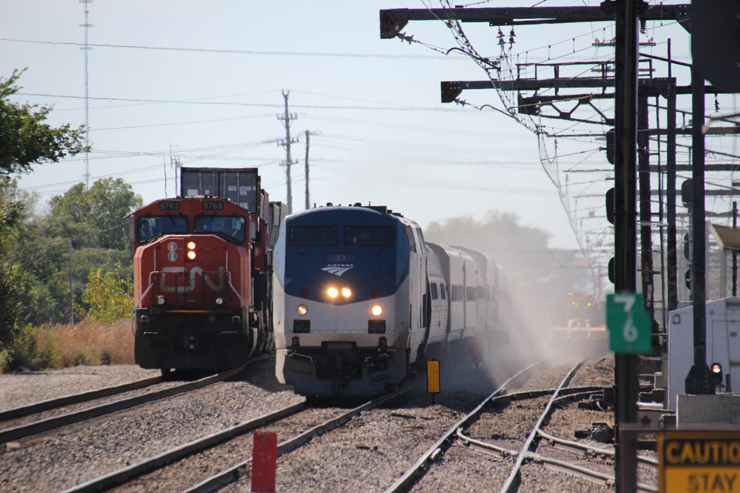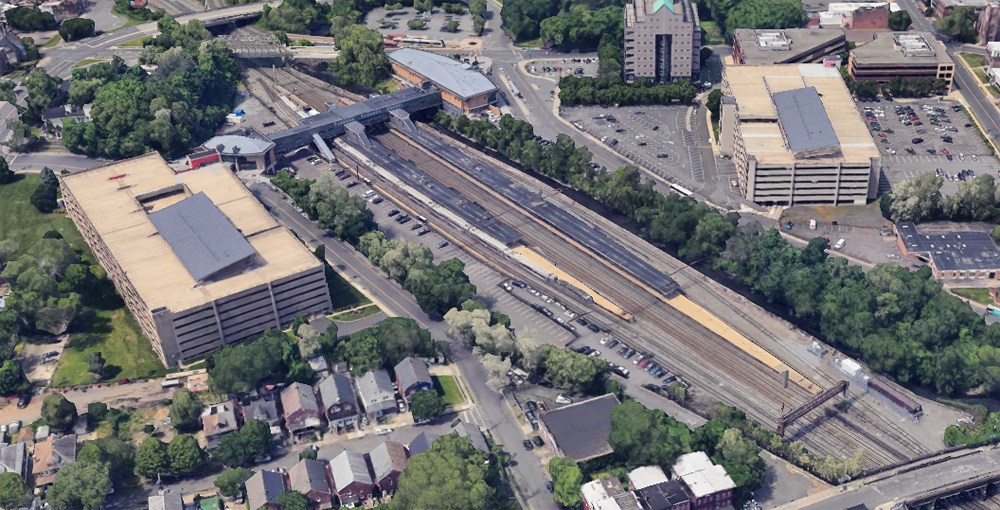
WASHINGTON — Railroads and shipper groups squared off over a proposed reciprocal switching rule during a daylong Surface Transportation Board hearing on Tuesday, with railroads warning of dire operational consequences and sole-served shippers saying they needed relief from high rates and poor service.
Federal regulators seemed sympathetic to shippers’ concerns but grappled with how they could craft a practical and workable reciprocal switching rule.
The reciprocal switching proposal would allow shippers served by one Class I railroad to gain access to a competing Class I railroad nearby. The current railroad would be forced to hand off the shipper’s traffic at the closest possible interchange. The idea is to introduce rail competition where none currently exists — and almost certainly never existed.
The current reciprocal switching rule, which dates to 1985, isn’t used because it requires shippers to prove that their serving railroad is engaging in anticompetitive conduct. The new rule merely would require the shipper to show that reciprocal switching either is in the public interest or is necessary to provide competitive rail service.
The shipper coalition – which includes the American Chemistry Council, the Corn Refiners Association, The Chlorine Institute, the National Industrial Transportation League, and The Fertilizer Institute – argues that reciprocal switching would enhance rail competition as Congress intended.
Greater competition would help limit rate increases while forcing railroads to consider how their operating decisions affect customers, the coalition says. The limits of the current rule were justified by the financial condition of railroads in 1985, they argue. But today’s highly profitable railroads are using their market dominance to squeeze sole-served shippers, they say.
The shipper group also was critical of concerns that railroads have raised about reciprocal switching. “The rail industry’s apocalyptic predictions for rail operations and investment are predicated upon inaccurate, exaggerated, and unrealistic scenarios,” says Karyn Booth, a lawyer for the shipper coalition.
STB Chairman Martin J. Oberman wondered how the board should decide what locations should be covered by reciprocal switching. He noted that railroads say it should be limited to terminal areas, while grain shippers propose a 100-mile radius from existing interchanges, and the shipper coalition says reciprocal switching should be permitted within a “reasonable distance” of a current interchange.

BNSF Railway
BNSF Railway Chief Marketing Officer Steve Bobb says the reciprocal switching rule would restrain growth by imposing a blunt regulatory intervention where none is required.
The “highest of high rates” should be subject to scrutiny, along with mergers’ impact on competition, Bobb says. And the STB should step in when rate and service issues can’t be resolved, particularly for shippers who can’t shift their business to other modes, Bobb says.
BNSF urged the STB to make better use of the tools it already has. BNSF was granted access to chemical producers in Lake Charles, La., nearly decade ago, Bobb notes, but has not yet been able to directly serve customers there due to delays associated with board processes and regulations.
The board also should be wary of providing shippers with the ability to choose routings for their traffic, Bobb says, noting that would increase operational complexity and make it more difficult to plan resources such as locomotive and crew levels.
Canadian Pacific
The ability of the Canadian rail network to perform well under Canadian interswitching regulations that date to 1904 should not be considered evidence that reciprocal switching can work on a much more complicated U.S. rail network, Canadian Pacific lawyer David Meyer told the board.
Interswitching was developed to encourage Canadian railways to share access to customers in urban areas, rather than build duplicate lines. Over the years CP and Canadian National have developed operational solutions to reduce the complexity of interswitching 355,000 cars annually.
But Tyme Wittebrood, CP’s director of regulatory finance, says interswitching can pose operational problems due to the lack of visibility of inbound interchange traffic. Because CP can’t see the origin and destination of interchange traffic until it arrives, the railway can’t plan to avoid congestion. This led to service problems in Vancouver in late 2018, prompting both CP and CN to embargo traffic to Canada’s busiest port. And that prompted complaints from shippers and scrutiny from Canadian regulators.
“We urge the board to move carefully,” Wittebrood says.
Adds Meyer: “Whatever you see in Canada today is not evidence of what would happen if you flipped a switch and turned on the same regulatory environment in the United States. You see the end result of a hundred years, you don’t see the adjustments necessary that would occur in a system that’s grown up without the kind of regulation that is being proposed here.”
Union Pacific
Reciprocal switching would be a disincentive for Union Pacific to invest in its network, Chief Financial Officer Jennifer Hamann says.
After working with plastics customers to understand their long-term goals, the railroad spent $115 million in recent years to build storage-in-transit yards that serve producers in Louisiana and Texas, she notes. If reciprocal switching were in place, UP would have to reconsider capacity expansion projects like the SIT yards because it would make returns on those investments uncertain, she says.
Eric Gehringer, UP’s executive vice president of operations, told the board that operational complications inherent in reciprocal switching would exacerbate local service problems. Reciprocal switching increases congestion, adds 48 to 96 hours of transit time on a roundtrip move, and requires railroads to use more locomotives and crews to move the same amount of volume, he explains.
UP welcomes competition, Gehringer says, but the board should consider the negative consequences reciprocal switching would have on all customers as well as the broader supply chain.
“Union Pacific is interested in having a conversation with stakeholders — larger and smaller railroads, customers and their organizations — to try to address the concerns that prompted the proposal while avoiding its negative consequences,” says Michael Rosenthal, a lawyer for UP.
The board should convene a committee and ask them to find common ground, Rosenthal says.
Oberman welcomed the suggestion, but STB member Robert Primus said it came 11 years too late, a reference to reciprocal switching proposals dating to 2011.
Primus says he’s frustrated with ongoing customer complaints about poor service. If UP is worried that it will lose customers through reciprocal switching, the railroad should fix its service problems, Primus says. “This issue, this problem, is self-inflicted,” he said in a testy exchange with UP representatives.
“Make no mistake. We want to provide great service to our customers. We know that we need to do that to be able to grow with them, and that is very, very important to us,” Hamann says.
Oberman was critical of the way UP routes Dow chemical traffic from the Gulf Coast to destinations in the East. Rather than interchange via a New Orleans shortcut, UP hands the traffic to eastern railroads at St. Louis, adding an extra 335,000 miles annually.
UP officials said the longer routing was essential to build density and may be faster and more reliable than alternate routes, including through the often congested New Orleans terminal. Oberman said railroads could invest in capacity improvements at the New Orleans gateway rather than spend the money on share buybacks.

Association of American Railroads
The hearing closed with presentations from the American Association of Railroads CEO Ian Jefferies says reciprocal switching would clog the rail network, produce delays and congestion, and cause wider supply chain problems.
Because it would make railroads less efficient, reciprocal switching would result in more traffic shifting to trucks, Jefferies says. And that, in turn, would create more greenhouse gas emissions.
Reciprocal switching also would create safety risks to railroad crews due to increased switching at yards and interchange points, he says.
“Sole-served shippers have legal protections from unreasonable rates, and several pathways to obtain that protection,” Jefferies says. “Backdoor rate regulation is not better. It is worse.”
The board hearing continues on Wednesday, including scheduled appearances by shippers, the short line and regional railroad association, Canadian National, CSX Transportation, and Norfolk Southern.














This morning I was looking out the train window at the connecting track from PRR’s Midvale Yard to RDG’s Wayne Junction Yard. Cars loaded on one could be immediately switched to the other by one of the on-duty shifters each road had there.
Neither yard is still a freight yard, and all the shippers are gone.
Funny that railroads argue that reciprocal switching will cause disinvestment. They’ve already been pretty good at disinvesting all on their own, through a scam called PSR, and that is without any government intervention to blame.
“Whatever you do, don’t throw me into the briar patch” as Brer Rabbit said.
Me thinks the RR’s are afraid they might loose some of their monopoly power over shippers.